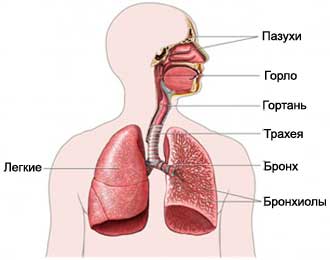Bronchoscopy
Description bronchoscopy
Bronchoscopy – visual inspection of the upper respiratory tract, leading into the lungs. The analysis is performed using a bronchoscope – long, a thin tube with a camera or endoscope at the end.
Causes performing bronchoscopy
Bronchoscopy is most often done for the following reasons:
- Diagnosis of the disease or infection of the lungs;
- The study of obstructions and secretions;
- To obtain a tissue sample – Biopsy;
- To obtain sputum;
- To determine the source of the cough or blood, released by coughing;
- Check foreign objects (eg, chewing gum, nut, or other object), which may inadvertently airway.
Possible complications during bronchoscopy
Complications are rare, but that does not mean the absolute absence of risk. If you plan to perform a bronchoscopy, the doctor will consider the risk of possible complications, which may include:
- Bleeding;
- Collapsed lung;
- Irregular heart rate;
- Infection;
- Pain and swelling of the throat.
Factors, that may increase the risk of complications:
- Smoking.
How is bronchoscopy?
Preparing for bronchoscopy procedure
Doctor, probably, perform some or all of the following::
- Medical checkup;
- X-ray of the lungs;
- Blood tests;
- CT scan – such as X-rays, which uses computer, to take pictures inside the body.
The patient may be asked to stop taking certain medicines a week before the procedure,:
- Anti-inflammatory drugs (eg, aspirin)
- Blood thinners, such as clopidogrel (Plaviks) or warfarin (Coumadin)
In the run-up procedures need to:
- Organize a trip to the hospital and back after surgery;
- On the eve of the evening before surgery you can have a light meal, You can not eat or drink anything after midnight.
Anesthesia
The local anesthetic used for pain relief Throat. It will also help to prevent coughing and nausea. Sometimes, a bronchoscopy is done under general anesthesia. In this case, the examinee will sleep.
Procedure bronchoscopy
Bronchoscope – long, a thin tube. It will be inserted through the nose or mouth into the throat and into the lungs.
The camera sends the image tissues airways or lungs of monitor. The doctor may use surgical instruments to select a small sample of tissue. If you find a foreign body, the doctor can remove it.
If you plan lavage (washing the body cavity, in this case it is bronchoalveolar lavage), It can be used an aqueous solution of. Usually, after washing the solution is sent to a lab for examination.
Immediately after bronchoscopy
Remote sample of tissue or secretions will be sent to a lab for examination.
How long will bronchoscopy?
Less than 1 time.
Bronchoscopy – Will it hurt?
Anesthesia prevents pain during the procedure. It may feel a pulling sensation, when the doctor removes a sample of tissue.
Expect some soreness in the throat and hoarseness for a few days after the procedure.
Recovery after bronchoscopy
Upon returning home, you need to perform the following actions, to ensure the normal recovery:
- Spit saliva. You do not need to swallow it, because after anesthesia throat muscles may not work;
- Do not have anything to eat or drink for about two hours after bronchoscopy;
- Before the meal to drink small amounts of water;
- If a biopsy was taken, no need to rinse the throat or cough;
- Before leaving the hospital, usually, will be made chest X-ray;
- You can not sit behind the wheel, sedative is not completely lose its effect;
- We need to ask the doctor, when you can resume taking medicines;
- After several days can return to normal eating, unless otherwise noted physician;
- Be sure to follow your doctor's instructions.
Getting biopsy results may take several days. TB test results are usually ready in six weeks. We need to ask the doctor, when to expect the results.
Contact your doctor after bronchoscopy
After discharge from the hospital need to see a doctor, If the following problems:
- Signs of infection, including fever and chills;
- Cough, shortness of breath or chest pain;
- Coughing up blood;
- Severe nausea and vomiting;
- Increased or unusual wheezing;
- Pain, which does not pass after taking pain medication appointed.
In the case of a serious and rapidly deteriorating health should immediately call an ambulance.

